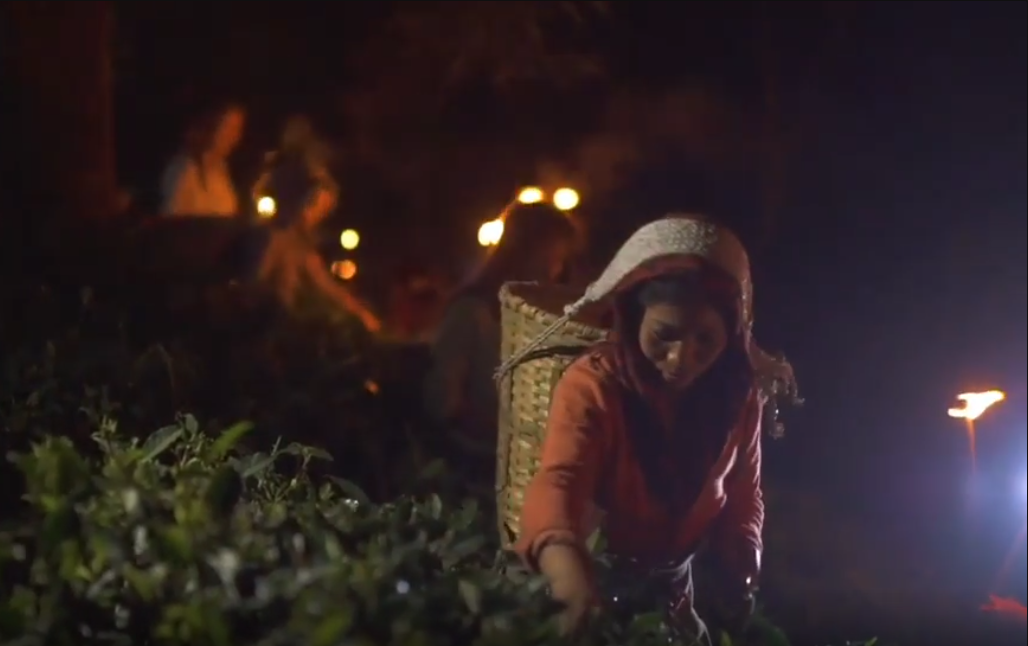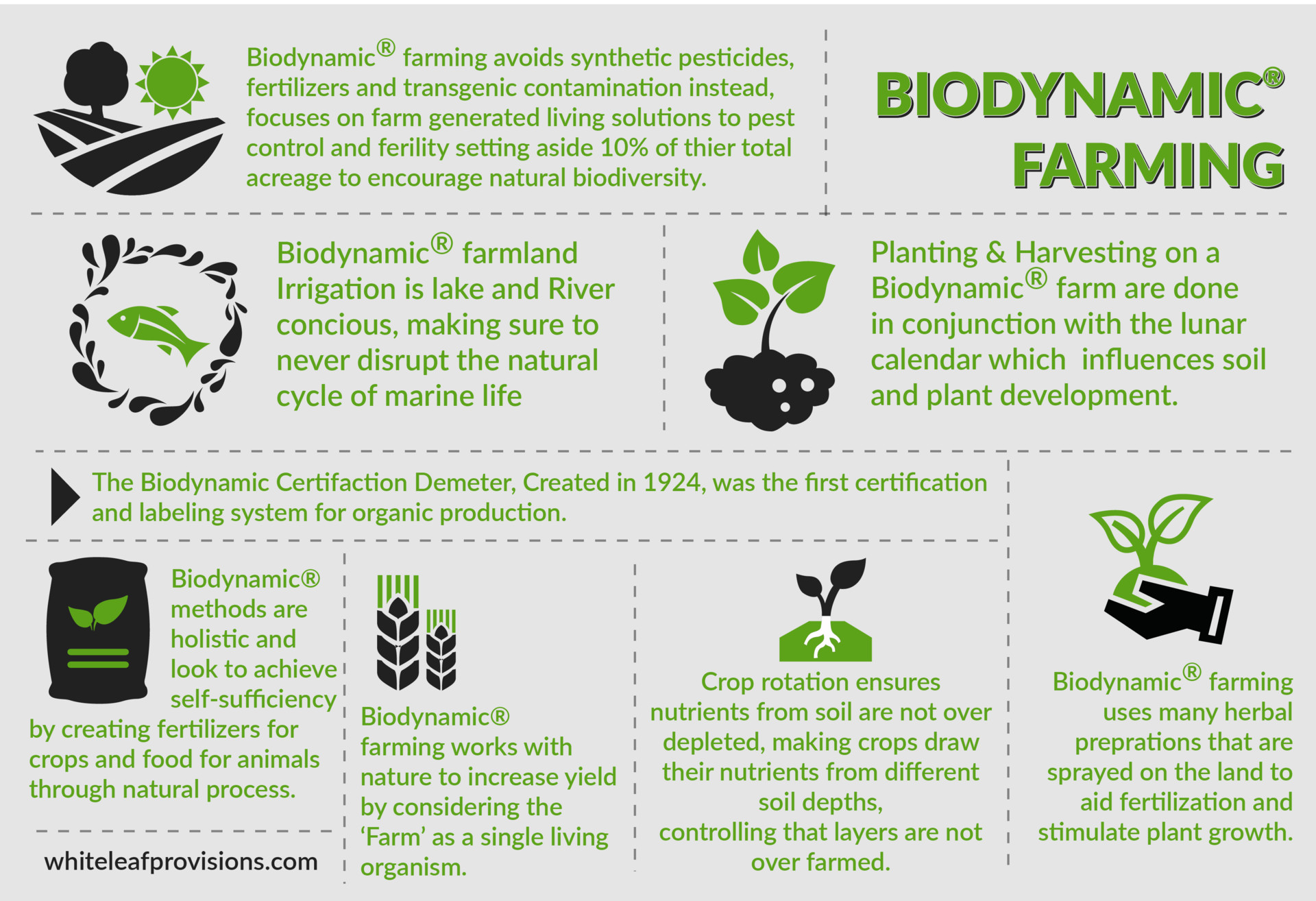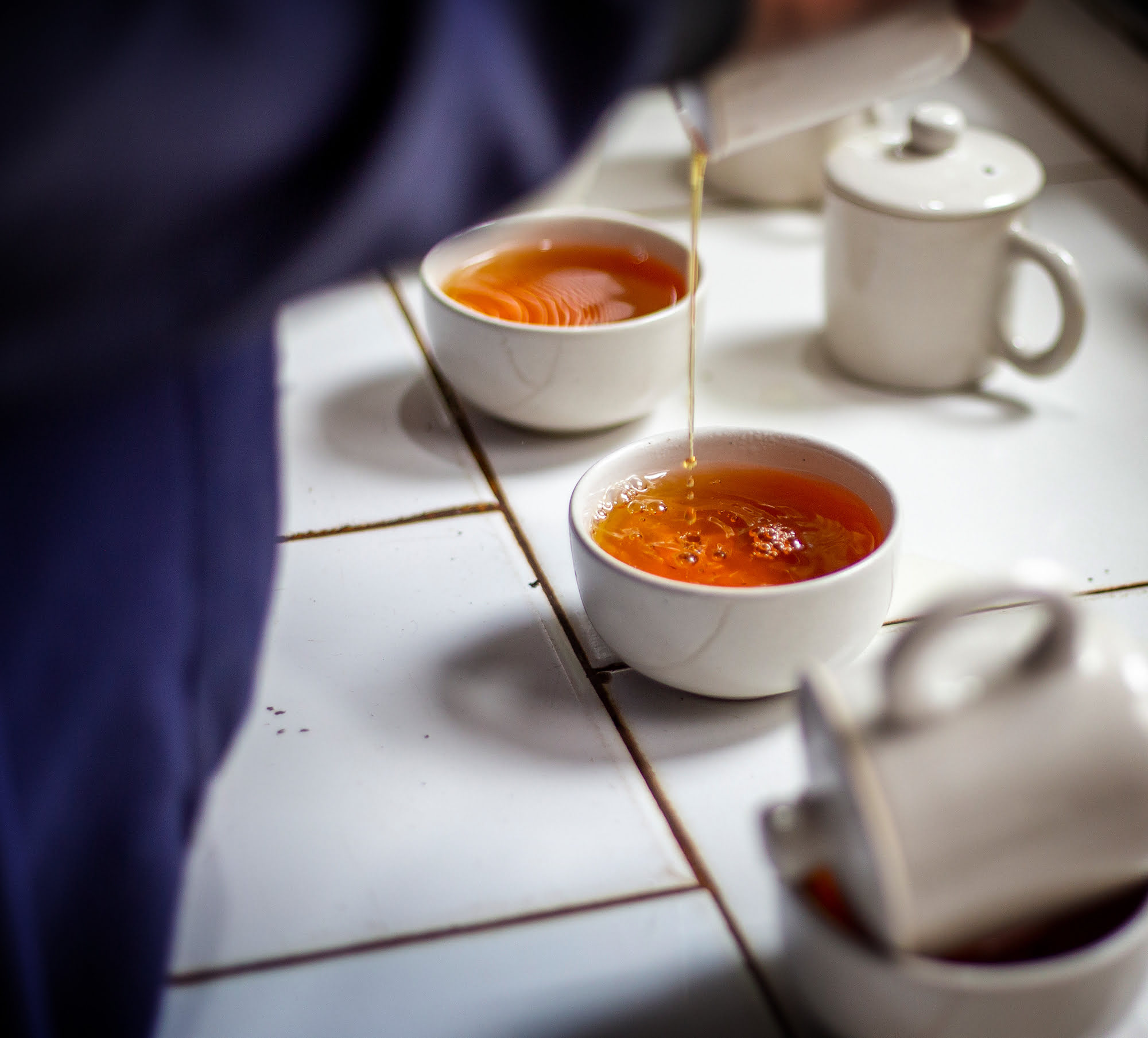Every summer under the cover of a full moon night, a most curious scene unfolds in the 150-year-old mist-covered plantation of Seeyok Tea Estate. Careful observation aided by the light from hand-hewn lanterns unveils 50 women fast at work. Their hands are swift and sure plucking away on a select patch of the estate’s best section in an unfaltering rhythm in sync with an an-age old chant. A strange enchantment captures the on-looker that roots them to the moment and awakens the curiosity of the nature of the activity.

Mr. J.P. Gurung, one of Darjeeling’s most senior tea professionals explains this is an annual event the tea estate observes steadfastly. A batch of muscatels dedicatedly picked for Teabox under the full moon is a summer harvest planned around the lunar calendar. This estate happens to be one of the few tea gardens in the world that practices biodynamic farming.
An alternative method of agriculture, it all started in 1924 with a series of eight lectures to a group of farmers in Breslau(now known as Wroclaw in Poland) by an Austrian scientist and philosopher Rudolf Steiner. Influenced by Goethean science and Rosicrucianism, his lectures presented an alternative agricultural viewpoint. To develop an ecological farming system to manifest as a grassroots alternative especially at a time when there was a steady deterioration of landscape due to aggressive chemical agriculture.

Following the tenet of biodynamics, it conceives the land as a functioning individual, a self-contained entity. The farm ecosystem is envisioned as an organism leading to more holistic management practices designed to achieve a balance between the physical and metaphysical realms. The intention is to recognize the influence of cosmic and terrestrial force which allows us to harness the potent life energy and enrich the land, the product of the land and the inhabitants of the same.

Like most other alternative agricultural practices, the ecological principle of biodynamic follows the common thread of raising food that is simply more than foods produced by conventional means. In terms of nutrition, taste, aroma it far exceeds the rest. With Seeyok tea estate following the lunar calendar and in essence practicing the very principles of biodynamics, understandably the summer harvest is always a much-awaited occasion.
“As practitioners of biodynamic farming, we follow the lunar calendar. We believe on a full moon night the cosmic energies are at the highest and this enhances the quality of tea that is harvested and produced during this period” Ashwini Sashidhar, the Chief Sustainability Officer of Seeyok Tea Garden explains rather succinctly. It elucidates why this tea, crafted especially for Teabox, is always in high demand across the world.

The muscatel teas of India already enjoy special attention for their prized rarity, being specific to the terroir of Darjeeling. The Seeyok Moonbeam Summer muscatels are rendered even more special due to their observational practices. Treating the garden as a living entity, singing to it, employing practiced hands to pick during the auspicious time under a strawberry moon night, the tea remains no longer a simple beverage. It is in itself a story, a living legend. To be seen, sensed, and savored.

